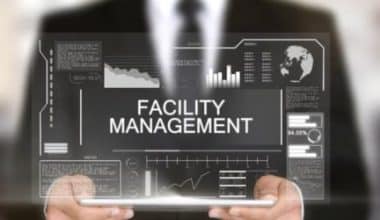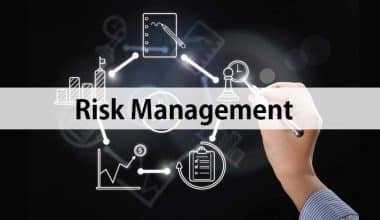Businesses require leaders to keep teams together, manage them through change, and achieve organizational goals. Employees’ expectations of their employers have risen since the coronavirus pandemic began. People prefer to work for organizations that prioritize employee engagement, promote Learning & Development (L&D), and support employee well-being. A leadership competence model solidifies your organization’s distinct definition of leadership, allowing for more consistent and successful people management. Here’s all you need to know about the competency model in HR management.
What is a Competency Model?
A competency model is a guideline established by a HR department that outlines the specific skills, knowledge, and behavioral requirements that enable an employee to properly do their job.
Competency models explain what success looks like in the organization for each particular role. The approach is used in recruitment, personnel management, training, and performance evaluation.
What is The Difference Between Competency Model And Job Description?
A job description and a competency model sound nearly identical because both appear to define what an individual is expected to do on the job. What is the distinction?
A job description is a basic explanation of the skills required for a position, but a competency model specifies particular behaviors that a person must perform on the job in order to be successful.
What Are The Advantages Of Employing A Competency Model?
Organizations with well-defined competency models have reported higher levels of performance success. According to the Society for Human Resource Management’s (SHRM) competence survey, 93% of 500 C-suite executives believe competency models are critical to their organization’s performance success.
Implementing the competency model benefits organizations in the following ways:
- Establishes a clear path for employee performance that is consistent with organizational goals and initiatives.
- Allows HR to get a firm grasp on all employee abilities and skills.
- Allows HR and Training to determine learning and development (L&D) needs more precisely.
- Allows employees to own the skills and behaviors expected of them in their employment.
- Allows firms to keep track of what skills their employees have so that strategy and planning can be directed toward future abilities that may be required.
- Provides a consistent and equitable measurement framework for performance evaluation.
What Are The Types Of Competency Models?
There is no standard set of skills for any specific job. The sort of competency that flows into a competency model is determined by the job’s specific requirements. For example, the qualifications specified for a restaurant waiter will be vastly different from the requirements of an accountant.
To better comprehend the type of information that may be provided, competencies can be divided into useful categories, such as:
#1. Core competencies
Core competencies are the fundamental abilities required by the organization for all employees; these are the fundamental requirements that employees must meet. This varies every firm because it is determined by the beliefs, philosophy, and aims of each organization, although it might contain basic needs such as communication skills or teamwork. Most jobs necessitate the ability to collaborate with others to some extent.
The organization’s aims are expressed in broad competencies that reflect the organization’s strength and uniqueness. The main expertise of a corporation that specialized in international parcel delivery would be logistics. Drilling down to an employee’s role inside this type of business, on-time delivery of customer parcels could be a core competency.
#2. Functional competencies
Functional competencies are job-specific abilities and behaviors that are distinctive to each role. For example, a restaurant waiter’s competency may be the ability to efficiently handle client complaints, whereas an accountant’s competency may be the capacity to evaluate a specific sort of financial data in order to generate reports.
Functional competencies should indicate what behaviors or skills are required for a person to be a top performance in their position.
#3. Leadership abilities
Leadership skills are frequently employed in supervisory and management roles, but they can be used to any job that requires an employee to lead others. They include traits such as leadership and decision-making abilities.
How Are Competency Models Used?
Competency models are utilized in many different HR activities, including:
Recruitment – Fully defined competency models are frequently utilized to create job postings. Organizations have a better possibility of discovering more precisely matched candidates when they are well-defined and explicit.
Talent/Performance Management – Defining organizational success boils down to worker performance; a competency model can specify what performance success should look like for each function within a company. This benchmark assists HR in connecting the function of each position with organizational goals while also ensuring that employee talent is cultivated.
Competency models give the framework required to effectively assess employees during a performance review; both the individual and the employer have a clearly defined set of behaviors and skills to work from.
What is a Competency Example?
Depending on the organization and profession, the format of a competency model for any given position will differ. There is no organization or standardization. Organizations frequently have their own distinct templated format for competency models.
The Society for Human Resource Management (SHRM) provides best practices in competency formulation by breaking down what information should ideally be included in each skill:
Best Practice:
- Title – The competency’s name
- Definition – A general description of the competency.
- Sub-competencies – Required general baseline abilities and attitudes
- Behaviors – Actions that demonstrate the highest level of proficiency.
- Proficiency Standards – Job-specific skill standards that reflect four stages of career growth (early, mid-level, senior, and executive).
Example of a Competency:
- Title: Establish customer relationships
- Definition: The capacity to develop a lasting relationship with customers through interactions is essential to the function as part of the Sales process.
- Ability to communicate effectively with consumers is one of the sub-competencies.
- Emotional intelligence and behavior
- Proficiency Standards: Identify consumer concerns and propose solutions to those concerns.
How to Create A Powerful Competency Model
#1. Determine what type of process works best for your company.
The study and development required to create well-defined competencies for a post can be time-consuming; understanding what is required for each position takes time. Because of today’s fast-paced and ever-changing business climate, some firms may benefit from a quicker and more intensive development process. Competency models that are also built to be adaptable can accommodate future developments.
#2. Look into accessible competency information.
Developing competencies demands more than broad comments about what the work would entail. Furthermore, the functional competencies must reflect what “great” performance entails, rather than just the basic skills for “acceptable” performance.
Previously defined competencies for similar tasks, as well as associated role documents, background information, and organizational core competencies, should be discovered and used as a guideline.
#3. Conduct interviews with relevant business units and executives
Interviews with relevant stakeholders offer the information required for the required competences of the function. Executives can supply the key organizational core competences required for the function, which reflect the organization’s values, philosophy, and ambitions. Managers and high-performers from relevant business areas can be interviewed to determine the main abilities and behaviors required for their roles. When conducting interviews, the emphasis should be on what talents and behaviors characterize a top-performing employee in that role.
#4. Determine the core competencies
The core competencies should reflect the organization’s baseline habits and talents. How should employees behave and contribute as members of the organization in order to fit within the company’s work culture and philosophy? Use the content from the study and interviews with CEOs and relevant organizational stakeholders.
#5. Develop job-specific competencies
At the research stage, job-specific competencies should represent the distinctive role abilities and behaviors indicated by departmental managers and top performers. What did these people need to know and do to be effective in their roles?
#6. Develop leadership abilities as needed
When developing management-related competences, it should be considered that the personnel are already aware with the organization’s fundamental competencies. The emphasis should be on distinct leadership characteristics and skills. At the research stage, these can be selected by the executive and senior management levels.
#7. Complete the competency list.
Organize the findings, but avoid being too restrictive in terms of competencies. If the list is too far-fetched, it may stymie recruitment efforts and turn off potential recruits. If the list is too broad or too narrow, it may result in an influx of candidates who are not properly suited to the position; it will also make it difficult for employees to meet organizational goals.
Validate the skill list with all process stakeholders, including executives and management. It is critical to sign off on skills to guarantee that all levels of the organization’s needs are addressed.
The Nine Competencies Of The SHRM Competency Model
The SHRM Competency Model promotes professional development by focusing on nine competencies:
#1. Interaction.
HR directors need good communication skills to communicate information effectively, from verbal and written communication to active listening and persuasion. Strong communication skills are also useful for providing criticism and participating in diplomatic endeavors.
#2. Relationship Administration.
The capacity to handle interpersonal interactions benefits the organization as a whole. Relationship management abilities generate excellent community relations, successful networking, and teamwork. It also aids in the development of client trust.
#3. Ethical Conduct.
Compliance with ethical practices and core principles develops accountability and establishes a sense of integrity, which motivates workers to be professional.
#4. HR expertise.
A good HR leader understands all of the ideas, methods, and functions that go into effective HR management. Risk and strategic business management, labor planning, and HR technologies are all critical areas of knowledge.
#5. Business savvy.
The capacity to analyze and apply information in a way that supports an organization’s strategic goal is referred to as business acumen. HR practitioners who are business savvy exhibit economic knowledge, strategic agility, and other operational characteristics.
#6. Conduct a critical evaluation
HR management relies heavily on information interpretation to make business decisions and recommendations. To make reasonable assessments and informed conclusions, critical thinking and commitment to research procedures are required.
#7. Global and Cultural Competence
HR professionals work with people from a variety of backgrounds on a daily basis, so they must consider the viewpoints of all parties involved.
#8. Leadership and navigation
Leadership is used by effective HR professionals to direct initiatives and support the organization through times of struggle.
#9. Consultation
HR specialists provide assistance to organizational stakeholders by relying on analytical thinking, people and project management, and problem-solving skills.
Who Uses Competency Models?
Competency models have evolved as essential tools used by human resources and learning and development departments to define skill and knowledge requirements for specific job categories, assess competencies and performance, and establish learning and development programs to help people thrive.
In Conclusion,
Competencies are unique abilities and attributes that professionals might develop to help them excel in a given field. Those pursuing a career in human resources (HR) may benefit from focusing their efforts on establishing core qualities that will assist them in managing people, handling conflict, and representing organizations. Understanding the competencies expected of HR professionals may assist you in filling critical skill gaps and gaining a competitive advantage in your career. That is where a competency model comes to play.
Related Articles
- CORE COMPETENCIES: Their Meaning, Examples, and Use in Business
- INNOVATION MANAGEMENT: Key Elements and Strategies
- HUMAN CAPITAL MANAGEMENT (HCM): Types, Examples & Software Solutions
- Enterprise Risk Management: Overview, Framework, Competencies






